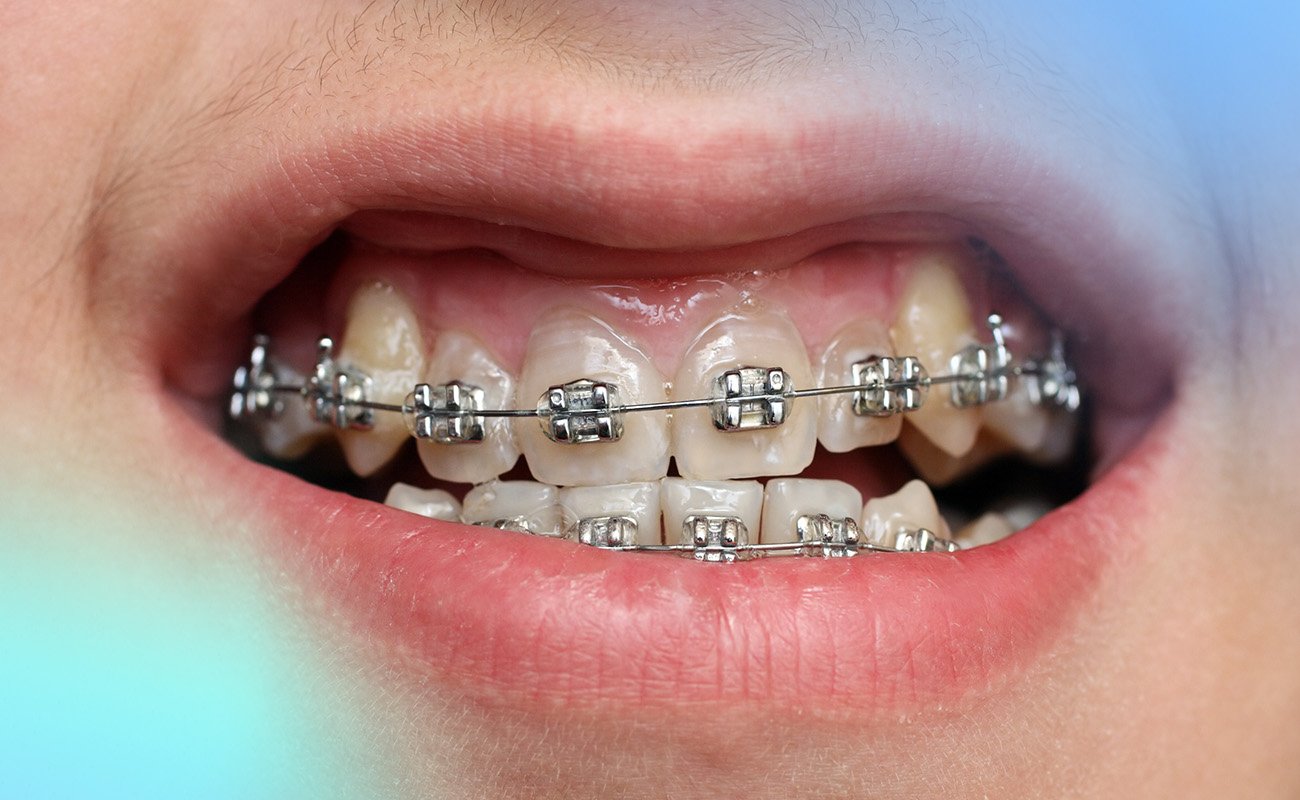For years, traditional metal braces have been the standard for correcting dental misalignments, yet they hardly make a style statement. The prospect of wearing a mouthful of metal for an extended period can deter many, particularly adults aiming for a sleek and professional look. Thankfully, the field of orthodontics has made leaps and bounds, introducing a variety of alternatives to braces that promise the ideal smile without compromising your confidence or comfort.
In this article, we’ll uncover the best alternative to braces, showcasing the latest advancements and techniques that are redefining the approach to dental alignment. From nearly invisible clear aligners to the discreet effectiveness of lingual braces positioned behind the teeth, we’ll unveil the secrets to achieving that perfect smile without sacrificing your self-esteem or daily routine.
Are Metal Braces Always the Best Solution?
While metal braces have long been the gold standard for correcting dental defects, they are not always the optimal solution for everyone. Advances in orthodontic technology have expanded the range of treatment options available, catering to a variety of needs and preferences.
Factors such as aesthetic considerations, treatment duration, comfort level, and the complexity of a particular dental problem can influence whether metal braces are the best choice. Individuals, especially adults, and teens who are self-conscious about their appearance, may lean toward clear aligners because of their nearly invisible nature. Others may find lingual braces, which are discreetly placed behind the teeth, a more attractive option.
Clear Braces
Clear braces, crafted from ceramic or composite materials, are designed to blend seamlessly with the natural color of teeth, offering a more aesthetic alternative to metal braces. These braces utilize the same mechanism as traditional braces, with brackets bonded to the surface of each tooth and connected by a wire that is periodically adjusted to guide teeth into proper alignment. The subtlety of clear braces can be an attractive option for people concerned about the visual impact of orthodontic treatment.
One of the key considerations when choosing clear braces is their cost, which can be higher than traditional metal braces due to the advanced materials used. However, for many, the investment is justified by the benefits of a less conspicuous appearance. In addition to their aesthetic advantage, clear braces are also known for potentially offering a more comfortable treatment experience, as the materials used can be less irritating to the gums and cheeks compared to the metal of traditional braces.
Despite these advantages, clear braces come with their set of challenges. They are more susceptible to staining from food, drinks, and smoking, requiring diligent oral hygiene and sometimes dietary adjustments to maintain their clear appearance. While visually appealing, the materials used in clear braces can also be more brittle than the durable metals used in traditional braces, posing a risk of breakage and requiring careful handling and potentially more frequent orthodontic visits for adjustment or repair. Moreover, clear braces may not be suitable for all orthodontic cases, especially those involving severe misalignments or complex bite issues, where the robustness of metal braces may be necessary.
See our article: Clear Braces on The Top and Bottom Teeth.
Lingual Braces
Lingual braces are crafted from high-grade stainless steel, similar to traditional metal braces, but with a significant twist: they are affixed to the back side of the teeth. This strategic placement renders them invisible in everyday interactions, offering a major aesthetic advantage for those concerned about the visibility of their orthodontic treatment. The process involves applying gradual pressure to the teeth, just like conventional braces, to guide them into the correct alignment over time.
Due to the customization and precision required for their application, lingual braces tend to be more expensive than traditional braces. This higher cost is often justified by the benefit of having a completely discreet treatment option. However, the placement of lingual braces presents certain challenges, such as increased difficulty in cleaning, which can lead to potential hygiene issues if not addressed properly. Additionally, some patients might initially find them uncomfortable and may experience a temporary impact on their speech as they adjust to the braces’ location behind their teeth.
See our article: How to Fix a Smile Without Braces?
Veneers
Veneers are a type of cosmetic dental treatment used to help improve the appearance of teeth. They are thin, tooth-shaped pieces of porcelain that are bonded onto the front surfaces of the natural teeth, effectively altering their color, shape, size, or length to create a more polished look.
Treatment usually takes two office visits, the first visit involves designing and preparing your veneer while the second involves attaching it. The application process involves the removal of a slight layer of enamel to make room for the veneer, which is then securely bonded to the tooth.
Although veneers can significantly improve the appearance of a smile quickly, they are usually more expensive than traditional braces due to the high-quality materials used and the customization process. Veneers are most effective for minor cosmetic issues, such as discoloration, chips, or small gaps between teeth, but they are not suitable for addressing more complex orthodontic conditions. The primary benefit of veneers is the immediate improvement in the appearance of teeth. However, the procedure is irreversible and may not address any underlying structural issues with the teeth.
See our article: Teeth Veneers Pros and Cons.
Clear Aligners
Clear aligners, crafted from transparent, flexible plastic, are tailored to fit closely over the teeth, offering a gradual, yet effective, approach to teeth alignment. Each set of aligners is part of a series that incrementally moves teeth into the desired position, with patients typically transitioning to a new set of trays every few weeks.
When it comes to cost, clear aligners can be cheaper than traditional metal braces, though prices can rise for more complex cases or longer treatments. Their near-invisibility is a significant pro, offering an aesthetic and less intrusive option for people concerned about the appearance of metal braces. The removability of clear aligners is another advantage, allowing for normal eating and simplifying oral hygiene routines.
The effectiveness of clear aligners is largely dependent on the wearer’s commitment to keeping them in place for the advised 22 hours a day, only removing them for meals, drinks other than water, and brushing or flossing. While they may not be suitable for treating severe orthodontic issues, clear aligners are an excellent option for mild to moderate cases.
See our article: Invisible Braces – How They Work.
Worth Knowing
According to research published in Angle Orthodontist, conventional braces typically require more visits and longer treatment time, averaging 5.5 months longer than clear aligner therapy.
Cheaper Alternatives to Braces
When looking for affordable alternatives to metal braces, at-home clear aligners are a standout option due to their lower cost, starting at approximately $1,000. These aligners are suitable for people with mild to moderate dental alignment issues.
Other orthodontic options such as clear braces, lingual braces, and Invisalign tend to be more expensive. Clear braces, which use tooth-colored brackets, and lingual braces, placed on the back side of teeth, offer aesthetic benefits but at a higher cost due to their less noticeable placement and the complexity of their application. Invisalign, known for its removable and nearly invisible aligners, also costs more, particularly for complex dental issues. Therefore, for those looking for a cheaper way to straighten teeth, at-home clear aligners are usually the most affordable option.
See our article: Why Are Braces Expensive?
Find the Best Alternative to Metal Braces
If you want to straighten your teeth without the hassle of metal braces, one of the best alternatives available is at-home clear aligners. They offer a high level of comfort, are very affordable, and provide an efficient and discreet solution to teeth straightening issues.
Here are some of the best at-home options with reviews:
Byte – The best choice, this aligner is the most affordable and comes with a free HyperBite and teeth whitening kit. Byte aligners come with a lifetime guarantee. See our review of Byte aligners.

Byte
An affordable option with refundable impression kits, free HyperByte, and a Byte for Life guarantee.
Check out Byte AlignersNewSmile – Low cost and offering premium aesthetics this product comes with a teeth whitening kit and retainer. See our review of NewSmile aligners.

NewSmile
Affordable at-home treatment with positive reviews offering superior look and comfort.
Check out NewSmile AlignersCandid – The most similar aligner to Invisalign this product offers a hybrid in-office care procedure. See our review of Candid aligners.

Candid
A hybrid of in-office and at-home treatment that provides 1-on-1 orthodontist support.
Check out Candid AlignersALIGNERCO – Lowest in price this invisible aligner offers a seasonal discount package from $945 and a zero monthly payment plan with zero down payment. See our review of AlignerCo aligners.

AlignerCo
The cheapest at-home aligners, with monthly plans, no down payment, and considerable discounts.
Check out AlignerCo AlignersFrequently Asked Questions
What to Get Instead of Braces
Instead of braces, you might consider looking at invisible aligners as an alternative option.
Invisible aligners, which need to be worn for 20-22 hours a day and replaced every two weeks, can provide more comfort and convenience than braces, so it’s worth researching further to determine if this option is right for you.
Are there Alternatives/Other Options to Braces?
There are several different options for traditional braces including invisible aligners, clear braces, lingual braces, or veneers.
Selecting the correct treatment option for your situation is important so you should discuss it with your orthodontist who will ensure you make the correct decision.
What is the Best Alternative to Braces?
Invisible aligners are an increasingly popular choice among those seeking alternatives to braces. Unlike traditional braces, this system involves custom-made clear aligners that are designed to fit snugly over the teeth and gradually move them into the desired position.
Aligners are comfortable, discreet, and highly effective at treating mild to moderate misalignment issues.
Are Regular Braces Cheaper than Invisalign?
An article by Oral-B states that the cost of metal braces averages around $3,000 to $7,000 whilst Invisalign is around $4,000 to $7,400.
When comparing the cost of regular braces and Invisalign, it is important to consider a range of other factors aside from the initial cost.
Braces come with a lower upfront cost, but require more maintenance over time. Invisalign is initially more expensive but offers more flexibility in the long term due to not needing regular visits for readjustment, helping save on costs.
Sources
Buschang, P.H., Shaw S.G., Ross M., Crosby D., Campbell P.M., Comparative time efficiency of aligner therapy and conventional edgewise braces. Angle Orthod (2014). DOI: 10.2319/062113-466. Available online at: https://meridian.allenpress.com/angle-orthodontist/article/84/3/391/58505/
Olsen, J., Comparison of Patient Factors Influencing the Selection of an Orthodontist, General Dentist, or Direct-To-Consumer Aligners for Orthodontic Treatment. Virginia Commonwealth University. (2019). Available online at: https://scholarscompass.vcu.edu/cgi/viewcontent.cgi?article=6855&context=etd
Alothman, Y., Bamasoud, M. S., The Success of Dental Veneers According To Preparation Design and Material Type, Open Access Maced J Med Sci. 2018 Dec 20; DOI: 10.3889/oamjms.2018.353. Available online at: https://www.ncbi.nlm.nih.gov/pmc/articles/PMC6311473/

